Simulation Standard
Silvaco面向半导体工艺和器件仿真工程师推出的技术刊物
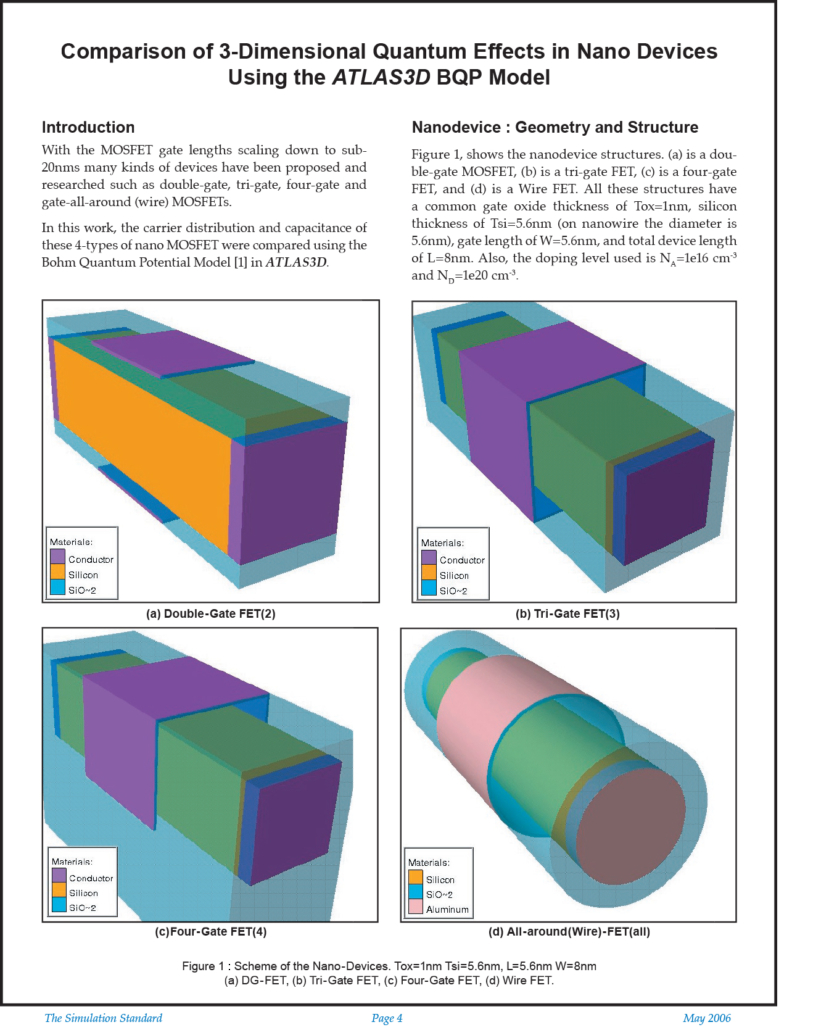
Comparison of 3-Dimensional Quantum Effects in Nano Devices Using the Atlas 3D BQP Model
Introduction
With the MOSFET gate lengths scaling down to sub-20nms many kinds of devices have been proposed and researched such as double-gate, tri-gate, four-gate and gate-all-around (wire) MOSFETs.
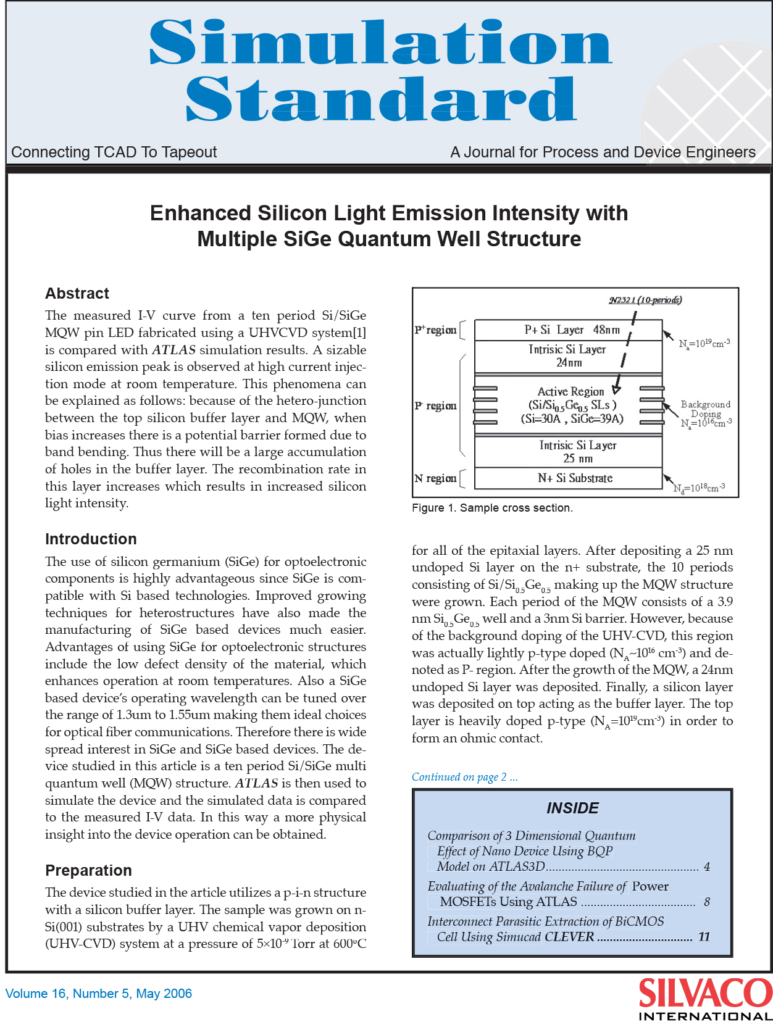
Enhanced Silicon Light Emission Intensity with Multiple SiGe Quantum Well Structure
Abstract
The measured I-V curve from a ten period Si/SiGe MQW pin LED fabricated using a UHVCVD system is compared with ATLAS simulation results. A sizable silicon emission peak is observed at high current injection mode at room temperature. This phenomena can be explained as follows: because of the hetero-junction between the top silicon buffer layer and MQW, when bias increases there is a potential barrier formed due to band bending. Thus there will be a large accumulation of holes in the buffer layer. The recombination rate in this layer increases which results in increased silicon light intensity.
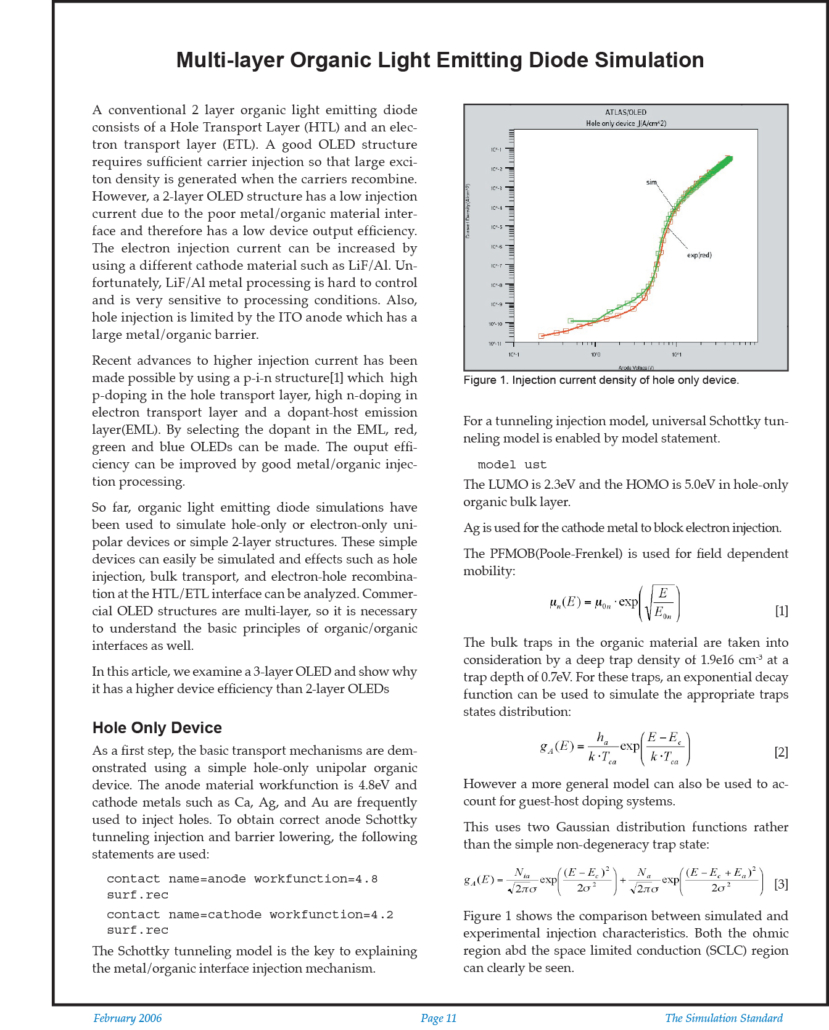
Multi-layer Organic Light Emitting Diode Simulation
A conventional 2 layer organic light emitting diode consists of a Hole Ttransport Layer (HTL) and an electron transport layer (ETL). A good OLED structure requires sufficient carrier injection so that large exciton density is generated when the carriers recombine. However, a 2-layer OLED structure has a low injection current due to the poor metal/organic material interface and therefore has a low device output efficiency. The electron injection current can be increased by using a different cathode material such as LiF/Al. Unfortunately, LiF/Al metal processing is hard to control and is very sensitive to processing conditions. Also, hole injection is limited by the ITO anode which has a large metal/organic barrier.
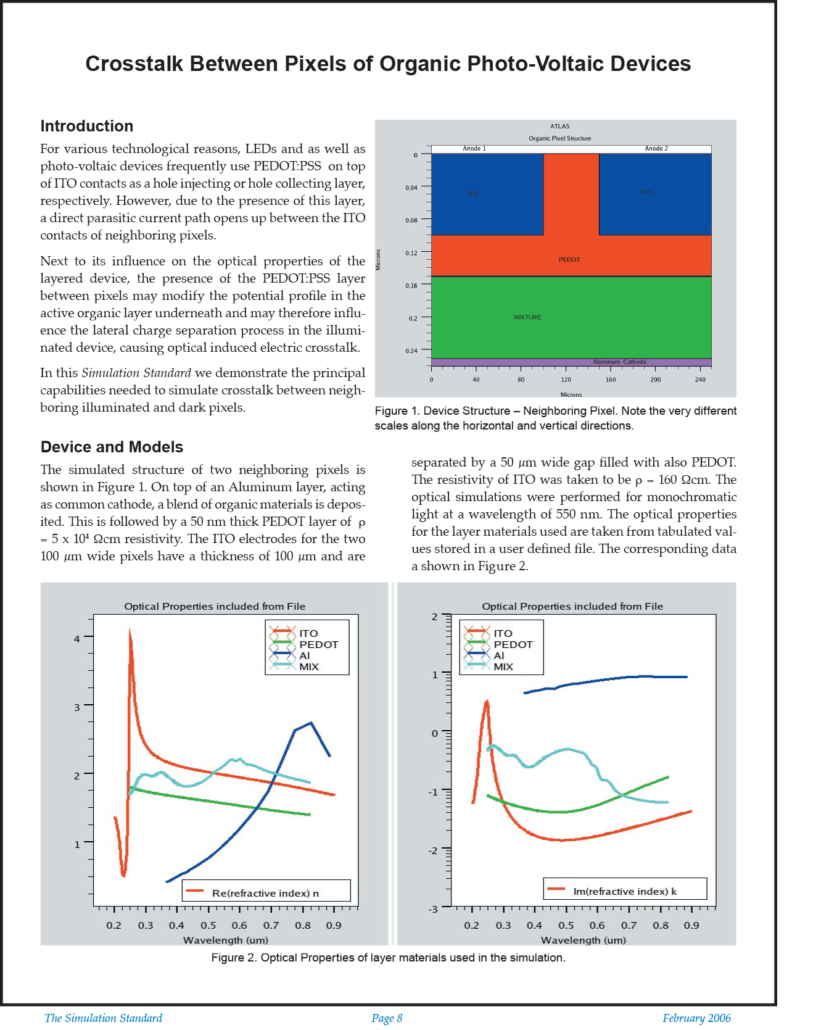
Crosstalk Between Pixels of Organic Photo-Voltaic Devices
For various technological reasons, LEDs and as well as photo-voltaic devices frequently use PEDOT:PSS on top of ITO contacts as a hole injecting or hole collecting layer, respectively. However, due to the presence of this layer, a direct parasitic current path opens up between the ITO contacts of neighboring pixels.
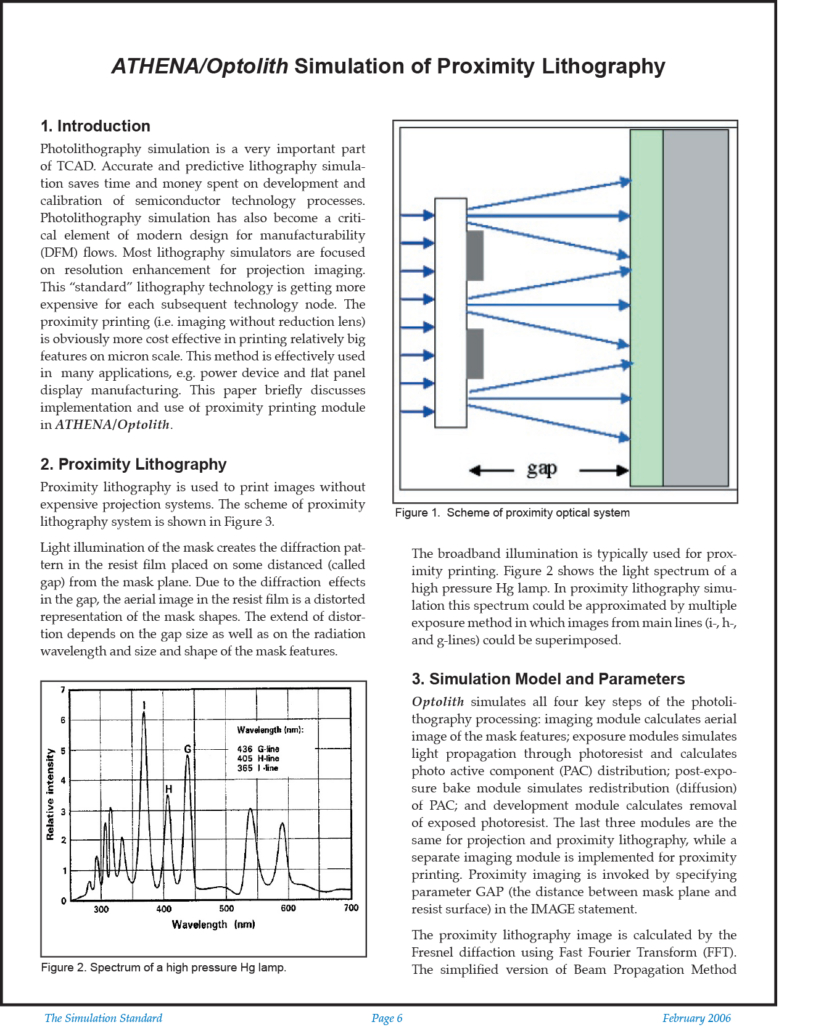
Athena/Optolith Simulation of Proximity Lithography
Photolithography simulation is a very important part of TCAD. Accurate and predictive lithography simulation saves time and money spent on development and calibration of semiconductor technology processes.
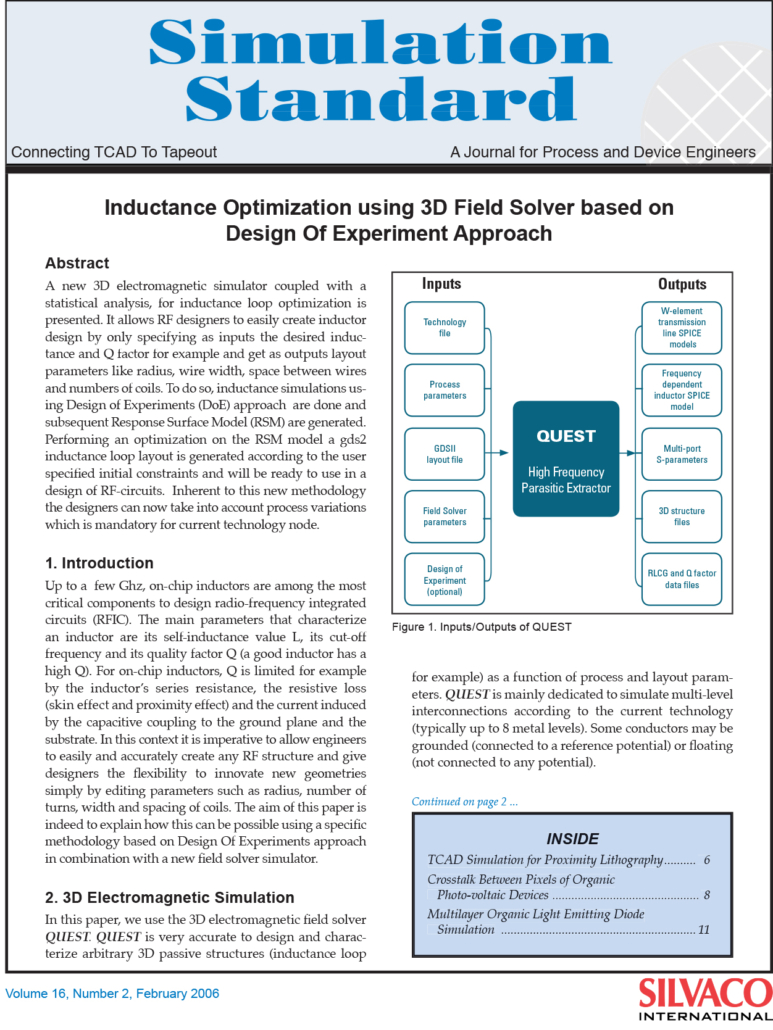
Inductance Optimization using 3D Field Solver based on Design Of Experiment Approach
A new 3D electromagnetic simulator coupled with a statistical analysis, for inductance loop optimization is presented. It allows RF designers to easily create inductor design by only specifying as inputs the desired inductance and Q factor for example and get as outputs layout parameters like radius

